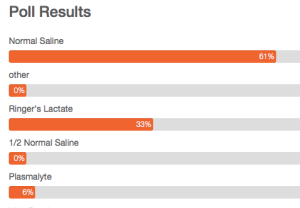There is going to be difficulty for young physicians who were entirely trained after diagnostic threshold science became entrenched to perceive its limitations. Our challenge is to facilitate a fundamental paradigm shift in the science of medical diagnostics. One way to do that may be to teach that Dynamic Relationism still contains the static thresholds and is completely capable of incorporating the static thresholds, if they are perceived to have value.
First, the young scientists have to be taught what the “time-series matrix of biologic particle densities, biologic forces, and biologic motion” ( The Human Matrix) actually is. The human matrix comprises all the available data of a individual over time. It projects backward in time and grows forward over time. The human matrix has a phenotypic conformation at rest. Perturbations of individual time series in the matrix occur on exposure to stress or disease and a relational grouping of perturbations comprises a “distortion of the human matrix”. Such distortions may be quite complex and prolonged, as with sepsis. These distortions comprise phenotypes of disease.
The two primary components of the data which are provided by Dynamic Relationism are:
- Relational time patterns of human matrix distortions
- Treatment time pattern integration with human matrix distortions
One way to understand dynamic relationalism is to recognize that it harnesses the power of much more of the information in the data by generating outputs which can be cognitively assimilated by the brains of healthcare workers which were formally using “numbers on a page” or limited portions of a time series matrix of data.
This is the future of medicine:
- Dynamic Diagnostic Relationism will replace the present standard (Diagnostic Thresholdism). See for example this pub med link: Dynamic diagnostic relationism: a new diagnostic paradigm for complex rapidly changing clinical conditions.
- Medicine will move toward researching, understanding, and teaching disease as a distortion of the time-series matrix of biologic particle densities, biologic forces, and biologic motion.
- Patients will own their own human matrix which will self-analyze.
- A central worldwide or US archive of phenotypes of disease as human matrix distortions will be developed.
- These distortions will be matched with the genotypes of disease with genotypes comprising the origin of matrix phenotypes.
- Medical students will be taught disease as phenotypes (as biologic distortions of the human matrix).
- The science of medicine will transition from static criteria based on thresholds to dynamic relational criteria based on phenotypes comprised of relational time patterns of human matrix distortions.
The following linked article shows the effect of reliance on the 1980s reductionist science of “static diagnostic thresholdism” (also called medical “threshold science”). It will be interesting reading for any young scientist or individual trying to understand social forces affecting scientific thought and dogma as they relate to contemporary science of pivotal importance to public health.
For additional reference, the site below presents a two part “Great Septic Debate” with one of the most respected and prominent experts in the field of sepsis science (who actually trained under the great sepsis scientist, Dr. Rodger Bone).
Never before has a clinical sepsis scientist with a pedigree this substantial actually come forward in public to defend traditional threshold science of sepsis. The intellectual debate presents a strong pragmatic defense which is contrasted with an intellectual challenge to sepsis science. For this reason this debate provides a unique window into the two opposing fundamental paradigms of medical science at the very “tip of the spear” of those seeking to combat sepsis in the interest of public health.
Dr. Simpson makes excellent points and his courage is remarkable. Those who are not aware of how science often works may not perceive why his willingness to openly debate the fundamentals of sepsis science is courageous but those with careers in in academia will understand. Suffice it to say that no other sepsis expert has been willing to openly debate the fundamentals of static threshold based sepsis science in open forum, nor has there been any formal challenge to the fundamental sepsis dogma in 25 years, other than those made by dynamic rationalists.
While this debate may seem to be about sepsis, it really transcends sepsis and is actually a debate over the future of 21st century medical science.
The debate is here in two parts. Read both parts of the Great Debate in order, and it flows well.
http://thinkingcriticalcare.com/
(It would be great for a sepsis thought leader to bring a public intellectual challenge here. If you are a young scientist bring your questions here or take them to your mentors. We teach that the future belongs to the young scientists who seek out mentors who welcome dissent and relish open debate.
“Normal science, in Kuhn’s sense exists. It is the activity of the non-revolutionary or more precisely, the not-so-critical professional: of the science student who accepts the ruling of the dogma of the day… In my view the ‘normal’ scientist is a person we ought to feel sorry for… He has been taught in a dogmatic spirit: he is a victim of indoctrination. I can only say that I see a very great danger in it and in the possibility of its becoming normal.” Karl Popper
Warm regards to all readers and of course we look forward to your comments and/or well reasoned dissent.
Lawrence Lynn
” The science of medicine is up us. There is no backup”

